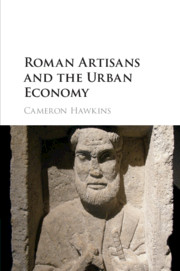Book contents
- Roman Artisans and the Urban Economy
- Roman Artisans and the Urban Economy
- Copyright page
- Dedication
- Contents
- Figures
- Tables
- Book part
- Introduction
- Chapter 1 Seasonality, uncertainty, and consumer demand in an ancient city
- Chapter 2 Specialization, associations, and the organization of production
- Chapter 3 Manumission and the urban labor market
- Chapter 4 The artisan household and the Roman economy
- Epilogue
- Book part
- Bibliography
- Index
- References
Bibliography
Published online by Cambridge University Press: 05 July 2016
- Roman Artisans and the Urban Economy
- Roman Artisans and the Urban Economy
- Copyright page
- Dedication
- Contents
- Figures
- Tables
- Book part
- Introduction
- Chapter 1 Seasonality, uncertainty, and consumer demand in an ancient city
- Chapter 2 Specialization, associations, and the organization of production
- Chapter 3 Manumission and the urban labor market
- Chapter 4 The artisan household and the Roman economy
- Epilogue
- Book part
- Bibliography
- Index
- References
- Type
- Chapter
- Information
- Roman Artisans and the Urban Economy , pp. 278 - 298Publisher: Cambridge University PressPrint publication year: 2016



